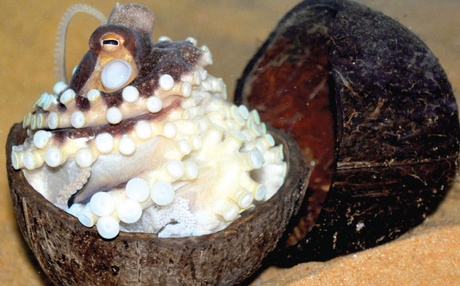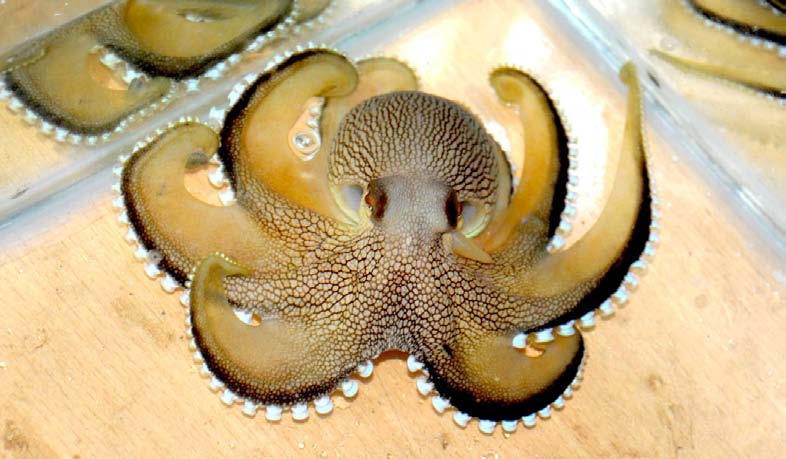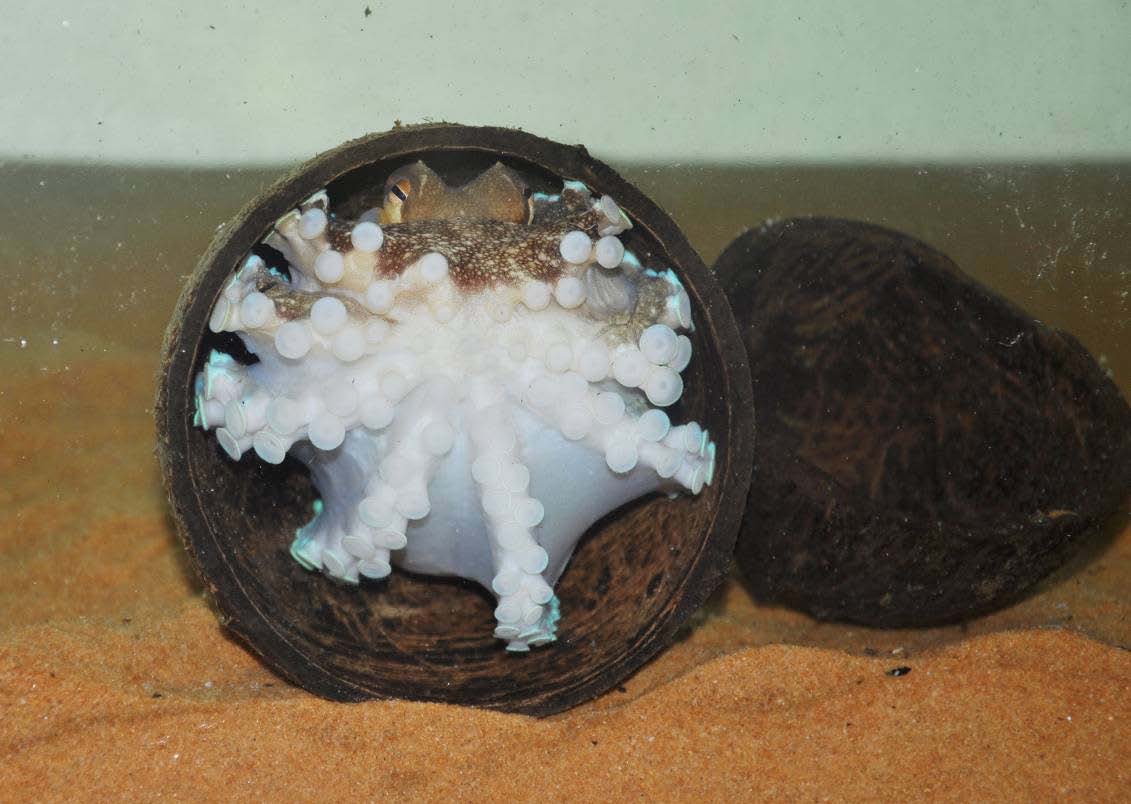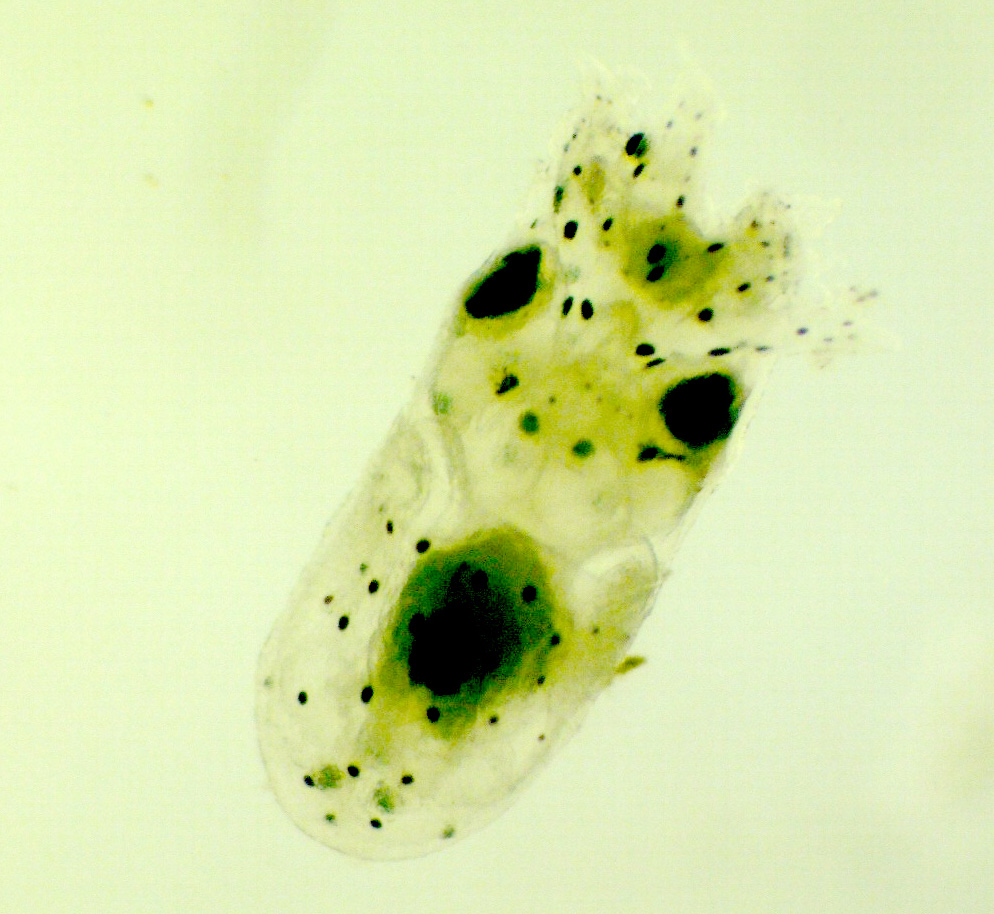Reproduction
In general, octopuses
are solitary creatures that interact seasonally to breed. These
interactions seem to have no distinct pattern which creates the
idea that these creatures breed based on if the opportunity
presents itself. Amphioctopus marginatus along with the other
octopus species reproduce sexually through internal
fertilization. The males possess a specialized tentacle that is
used to transport the sperm during sexual reproduction (Sreeja and
Bijukumar 2013). In order
for a successful reproductive cycle, the eggs must be laid in a
safe location. Octopi generally inhabit a den or hole in
which they consider home and more importantly use to protect the
fertilized eggs. Upon fertilization, the female will generate
these clusters of eggs called festoons and attaches these
clusters to rocks along with other surfaces inside the den and
then the female goes into a period of incubation (Sreeja and
Bijukumar 2013).

In V. Sreeja and A. Bijukumar’s ethological study of the Veined Octopus (Amphioctopus marginatus) they reported the octopi attaching these egg clusters on the inside of the coconuts that they also use as a portable-protective shelter (Sreeja and Bijukumar 2013). When one of the octopi in the study was examined V. Sreeja and A. Bijukumar found 22 festoons cemented to the coconut carried around by the octopus, with a total of around 20,000 eggs (Sreeja and Bijukumar 2013). When the fertilized eggs are laid and attached to coconut, the octopi begin the brooding period, which is another term for the incubation of the eggs. During incubation the female octopus becomes extremely active and protective to ensure the safety of the eggs, removing anything that threatens her spawn (Sreeja and Bijukumar 2013). The female displays this behavior until the eggs have hatched. It is also important to note that often times during this incubation period the female can starve and die before the eggs hatch; because she spends little time foraging for food. In their study, V. Sreeja and A. Bijukumar witnessed hatchlings on the 16th day of fertilization and determined that the hatchlings were said to resemble the general body shape of an adult octopus (Sreeja and Bijukumar 2013). The hatchlings observed were said to be planktonic in nature which can help explain the wide distribution that the Amphioctopus marginatus displays. These planktonic young are able to survive for a while before entering the later developmental stages, which allows for a lot of time for dispersal through ocean currents.
Click here to see the form and function of the Coconut octpus or go back and visit our home page.



